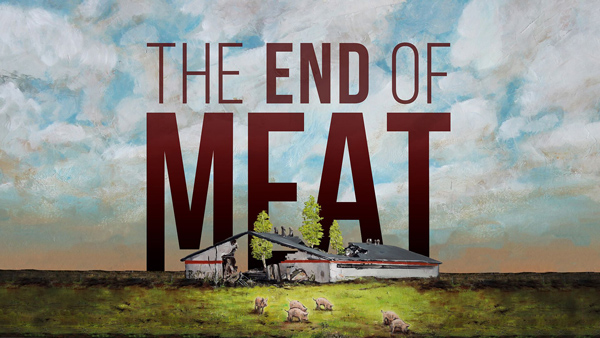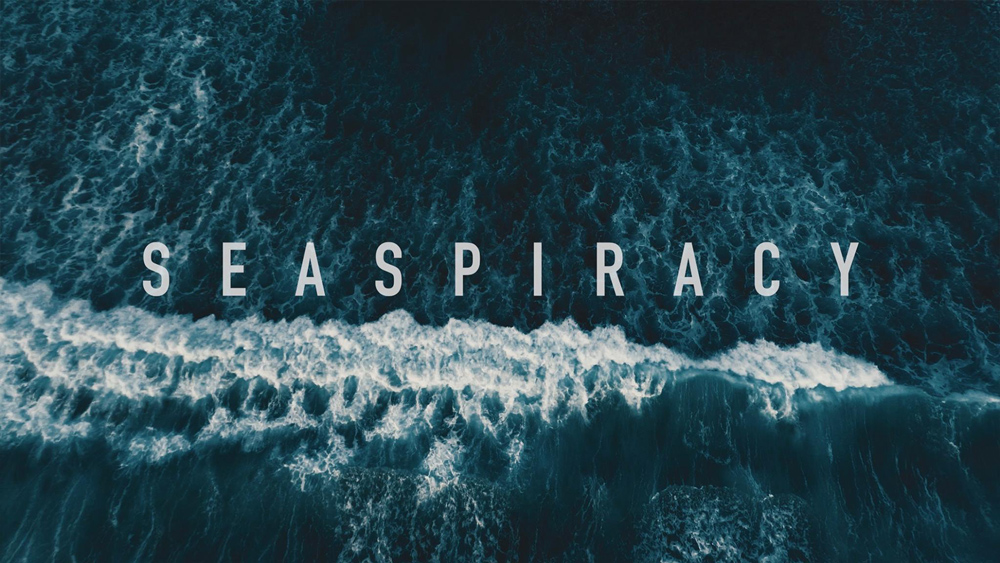Umwelt- und Klimaschutz
Wenn über Umweltschutz und den Klimawandel gesprochen wird, geht es oft um das Abschalten von Kohlekraftwerken, nachhaltige Mobilität und energieeffizientes Bauen. Doch wie wir uns ernähren, hat in vielen Bereichen sogar deutlich größere Auswirkungen, z. B. auf den Ausstoß von Treibhausgasen und die Zerstörung von ganzen Ökosystemen. So ist der Fleisch- und Milchkonsum hauptverantwortlich für die Abholzung des Amazonas in Brasilien und die Verschmutzung des Trinkwassers hier in Deutschland. Daher zeigen wir dir hier, wie du deinen persönlichen CO2-Abdruck senken kannst.
Landnutzung
Von der Landoberfläche der Welt sind aufgrund extremer physiogeographischer Voraussetzungen (Wüsten, Eisschilde) nur etwa zwei Drittel nutzbar. Der Großteil (68 %) der landwirtschaftlichen Nutzfläche ist Weideland, auf dem z. B. Rinder, Schafe und Ziegen gehalten werden. Doch selbst die Ackerflächen dienen zu 65 % der Tierhaltung – für die Futtermittelproduktion. Durch den Umstieg auf pflanzliche Ernährung würde der Flächenfußabdruck des Durchschnittsbürgers von ca. 2000 m2 pro Kopf um mehr als zwei Drittel sinken. [1]
- Agrarfläche (Weide- u. Ackerfläche) 56%
- Waldfläche 42%
- Städte, Infrastruktur etc. 2%
Treibhausgase
Rund 60 % der Methan-Emissionen und 80 % Lachgas-
- Landwirtschaft 60%
- Abfall und Abwasser 18%
- Emissionen aus Brennstoffen 14%
Wasserverbrauch
In der Landwirtschaft werden weltweit 70 % der Trinkwasservorräte verbraucht. Einerseits trinken die Zuchttiere viel Wasser – eine Kuh bis zu 80 Liter pro Tag – doch auch der Anbau von Futter (Soja, Mais, Weizen etc.) kann nicht allein durch grünes Wasser (Regen) gedeckt werden. Hier wird künstlich bewässert, was selbst in einem weniger stark betroffenen Land wie Deutschland in den letzten Sommern schon zu Wasserknappheit geführt hat. Diese Tendenz wird sich durch den Klimawandel voraussichtlich verschärfen . [3]
- Landwirtschaft 70%
- Industrie 20%
- privater Verbrauch 10%
Dokus

Cowspiracy
Die industrielle Viehzucht und die Agrarwirtschaft sind die Hauptgründe für den immensen Wasserverbrauch und die hohe Umweltverschmutzung. Um herauszufinden, weshalb dieser Tatsache so wenig Beachtung geschenkt wird, konfrontieren die Filmemacher namhafte Umweltorganisationen mit unbequemen Fragen, begeben sich aber auch auf die Suche nach nachhaltigen Alternativen, um Lösungsvorschläge zum besseren Schutz der Umwelt anzubieten. Die Doku ist auch auf Deutsch verfügbar.

The End of Meat
Die Dokumentation ergründet, wie eine Welt komplett ohne Fleischverzehr aussehen würde. Dabei kommen unter anderem Philosophen, Wissenschaftler, Künstler und Aktivisten zu Wort. Es geht vor allem um die Rolle von Tieren in der Gesellschaft. Es wird untersucht, welche Vorteile einer pflanzlichen Ernährungsweise bietet, welche Auswirkungen unser Konsum auf Umwelt hat. The End of Meat ist auch auf Deutsch verfügbar (deutscher Titel: Eine Welt ohne Fleisch).

Seaspiracy
Seaspiracy ist ein kurzer, augenöffnender Dokumentarfilm, der vollgepackt ist mit Daten und Fakten über das Fischen und darüber, wie der Verzehr von Fisch nicht nur unseren Planeten und die Ozeane ruiniert, sondern auch unglaublich schädlich für unsere Gesundheit ist. Er behandelt auch die vergessenen Opfer, die Fische, die fühlende Lebewesen sind sowie unter Schmerzen und Stress leiden, wenn sie plötzlich ihrer natürlichen Umgebung entrissen werden.
Kuhmilch vs. Pflanzenmilch
Bei der Debatte rund um die negativen Auswirkungen des Fleischkonsums aufs Klima wird ein Nahrungsmittel oft vernachlässigt: Kuhmilch. Der schwedische Hafermilch-Hersteller Oatly hat eine Studie in Auftrag gegeben, die zeigt, dass sich Hafermilch im Vergleich zu halbfetter Kuhmilch um 69 % weniger schädlich auf das Klima auswirkt, nur 39 % der Energie zur Herstellung benötigt und 82 % weniger Land zum Anbau nutzt. [4]
BIO
Ist Bio-Tierhaltung ökologischer?
Ökolandwirte, die pflanzliche Produkte herstellen, verwenden natürlichere Pestizide, robustere Sorten sowie vielfältige Fruchtfolgen und belasten damit weniger die Umwelt. Doch wie sieht es mit der Bio-Tierhaltung aus? Natürlich hat der Verzehr von in Deutschland gezüchteten und bio-zertifizierten Tieren eine bessere Klima-Bilanz als importiertes Rindfleisch aus Südamerika. Doch bemerkenswert ist, dass Ökofleisch nicht selten schlechter als Fleisch aus konventioneller Produktion abschneidet. Das hat einfache Gründe: „Die Tiere […] leben länger, fressen mehr und emittieren mehr“, so Julia Weiß vom Institut für ökologische Wirtschaftsforschung. Im Vergleich zu den pflanzlichen Alternativen schneiden auch die regionalen Öko-Tierprodukte schlecht ab, wie in der Grafik zu sehen ist. [5]
Tabelle: CO2-Emission ausgewählter Produkte (pro kg)
| Produkt (1 kg) | konventionell | Bio |
| Rindfleisch | 23,6 kg | 20,2 kg |
| Schweinefleisch | 6,35 kg | 5,64 kg |
| Hühnchenfleisch | 4,2 kg | 6,7 kg |
| Tofu (Soja) | 1,66 kg | 0,79 kg |
| Hirse-Bratling | 0,52 kg | k. A. |
| Weizen (Seitan) | 0,3 kg | 0,19 kg |
- Rindfleisch (konventionell): 23,6 kg
- Rindfleisch (Bio): 20,2 kg
- Schweinefleisch (konventionell): 6,35 kg
- Schweinefleisch (Bio): 5,64 kg
- Hühnchenfleisch (konventionell): 4,2 kg
- Hühnchenfleisch (Bio): 6,7 kg
- Tofu (konventionell): 1,66 kg
- Hirse-Bratlinge (konventionell): 0,52 kg
- Weizen/Seitan (konventionell): 0,3 kg
Überfischung
Mehr als zwei Drittel der weltweiten Fischbestände sind akut bedroht oder erschöpft – wenn wir weiter so viel Fischfang betreiben wie bisher könnten wir bis 2048 fischlose Ozeane sehen, mit drastischen Folgen für das gesamte Ökosystem. Aktuell werden 2,7 Billionen Tiere jährlich aus dem Meer gezogen und für jeden gefangenen Fisch, Shrimp oder Wal werden im Schnitt bis zu 5 Meerestiere unbeabsichtigt gefangen sowie als Beifang zurück ins Meer geworfen. Aquakulturen sind keine ökoligische Alternative, denn z. B. für 1 kg gezüchteten Lachs müssen mehrere Kilo wild gefangener Fisch gefüttert werden – bei der Thunfischzucht sogar deutlich mehr. [6]
- an der Belastungsgrenze 60%
- überfischt 33%
- moderat befischt 7%
Grundwasser-Verunreinigung
Ein weiteres Problem der Tierhaltung ist die Verschmutzung des Trinkwassers mit Gülle (als Nitratdünger). In Deutschland werden jährlich 190 Millionen Tonnen auf die Felder gekippt, doch die Pflanzen können nicht alles aufnehmen, sodass vieles im Grundwasser, in Flüssen oder in Seen landet. In vielen Regionen mit intensiver Tierhaltung, wie z. B. in Niedersachsen, sind die Nitratwerte besonders hoch. Dies kann für Säuglinge lebensgefährlich werden, doch auch bei Erwachsenen kann das im Körper umgewandelte Nitrit zur Einschränkung des Sauerstofftransports führen. Mit der Gülle kann das den Tieren verabreichte Antibiotika das Grundwasser verseuchen, ebenso wie Pestizide durch den intensiven Anbau von Viehfutter. [7]
- problematische Werte 35%
- geringfügig belastet 22%
- deutlich über Grenzwert 14%
Urwald-Abholzung
Die landwirtschaftliche Tierhaltung ist verantwortlich für bis zu 91 % der Abholzung des Amazonas Urwalds. Aktuell werden 1 bis 2 Hektar pro Sekunde zerstört, hauptsächlich für die Viehzucht und den Anbau von Soja, das als Futtermittel für in die ganze Welt exportiert wird. Das ist nicht nur problematisch für die Artenvielfalt (137 Pflanzen- und Tierarten sterben dort täglich), sondern auch für das Weltklima: Die Urwälder sind für 40 % des Sauerstoffs in der Luft verantwortlich und setzen bei der Rodung (durch Verbrennen) gespeichertes CO2 als Treibhausgas wieder in die Atmosphäre frei. (Anmerkung: Das in pflanzlichen Produkten wie Bio-Tofu verwendete Soja wird fast nur regional in Deutschland oder den angrenzenden EU-Nachbarländern produziert.) [8]
- 2014: 30 Mio. ha
- 1990: 11,5 Mio. ha
- 1970: 1 Mio. ha
Quelle
Quellenangaben
1. Landnutzung
https://www.umweltbundesamt.de/sites/default/files/medien/479/publikationen/globale_landflaechen_biomasse_bf_klein.pdf
http://mobil.wwf.de/fileadmin/fm-wwf/Publikationen-PDF/WWF_Studie_Nahrungsmittelverbrauch_und_Fussabduecke_des_Konsums_in_Deutschland.pdf
2. Treibhausgase
https://www.umweltbundesamt.de/daten/klima/treibhausgas-emissionen-in-deutschland/methan-emissionen
https://www.umweltbundesamt.de/daten/land-forstwirtschaft/beitrag-der-landwirtschaft-zu-den-treibhausgas#emissionen-aus-der-landwirtschaft-im-jahr-2017
3. Wasserverbrauch
https://www.wwf.de/themen-projekte/fluesse-seen/wasserverbrauch/wasser-verschwendung/?gclid=Cj0KCQjw-Mr0BRDyARIsAKEFbeest7pYDwH9GYNM0RLDX7Mfuvs6UX_ZH3hghe0nfluHVO7e3C-psH4aAhhZEALw_wcB
https://wiki.bildungsserver.de/klimawandel/index.php/Wassernutzung
4. Kuhmilch vs. Pflanzenmilch
https://www.semanticscholar.org/paper/Soy-Milk-an-attributional-Life-Cycle-Assessment-the-Birgersson-Moberg/58efa4a24e6647fd82fed065bb36f7a18217f416
https://www.oatly.com/uploads/attachments/ck16jh9jt04k9bggixfg6ssrn-report-the-climate-footprint-of-enriched-oat-drink-ambient-carboncloud-20190917.pdf
https://albert-schweitzer-stiftung.de/aktuell/oekobilanz-pflanzenmilch
5. Bio-Tierhaltung
ioew.de/uploads/tx_ukioewdb/IOEW-SR_186_Klimawirkungen_Landwirtschaft_01.pdf
https://www.zeit.de/wissen/umwelt/2012-07/klimakiller-fleisch/seite-2
https://www.klimatarier.com/de/CO2_Rechner
https://www.taifun-tofu.de/de/konsequent-oekologisch
6. Überfischung
http://www.unis.unvienna.org/documents/unis/ten_stories/09fisheries.pdf
http://www.fao.org/3/i2727e/i2727e01.pdf
http://www.fao.org/3/W6602E/w6602E09.htm
http://www.fao.org/3/i9540en/I9540EN.pdf
https://www.greenpeace.de/themen/meere/aquakultur-die-bessere-alternative?BannerID=0818015015001047&utm_source=google&utm_medium=cpc&gclid=Cj0KCQjw-Mr0BRDyARIsAKEFbefcGomBJzIspqdb-QUEzQq8VI66YQmVWoJzTV93NUfVXxwTgpgTy7oaAhbQEALw_wcB
7. Grundwasser-Verschmutzung
https://www.umweltbundesamt.de/themen/boden-landwirtschaft/umweltbelastungen-der-landwirtschaft
http://www.umweltinstitut.org/themen/landwirtschaft/massentierhaltung/verschmutztes-grundwasser.html
https://www.bundestag.de/resource/blob/527172/843713801f63311ed38a882384584c23/WD-5-056-17-pdf-data.pdf
8. Urwald-Abholzung
http://documents.worldbank.org/curated/en/758171468768828889/pdf/277150PAPER0wbwp0no1022.pdf
https://rainforests.mongabay.com/facts/rainforest-facts.html#8
https://www.cbd.int/doc/speech/2007/sp-2007-05-22-es-en.pdf
http://www.fao.org/forestry/iyf2011/69186/en/